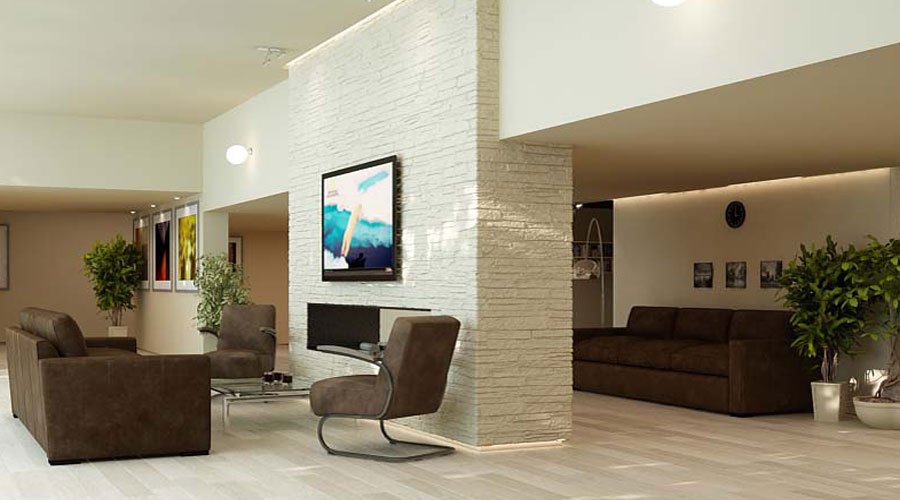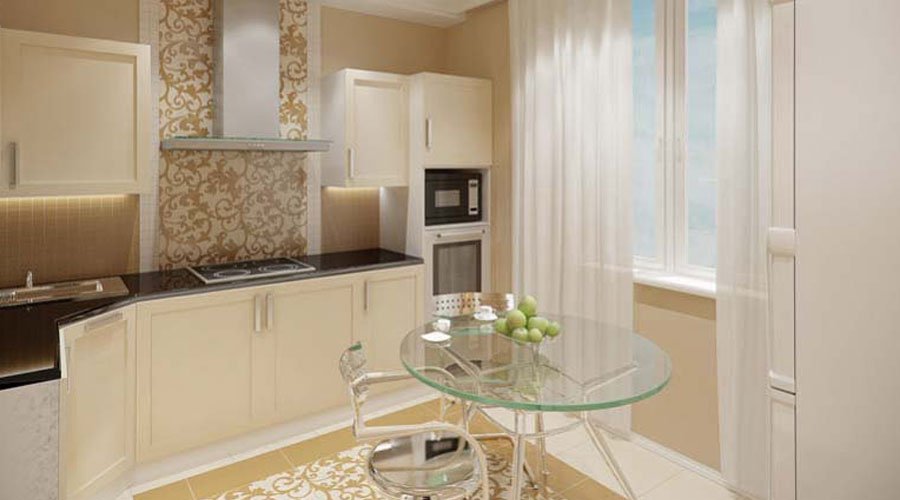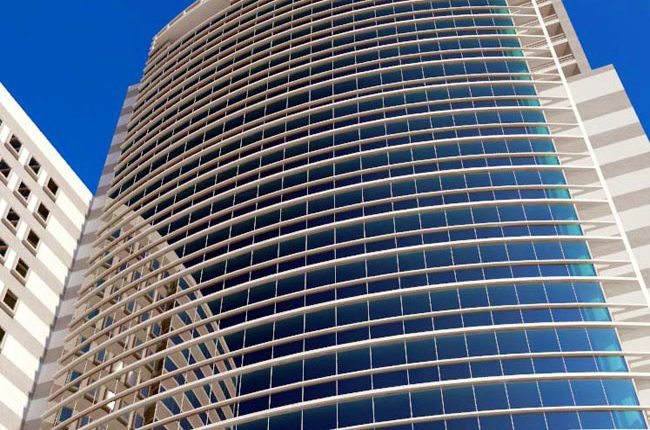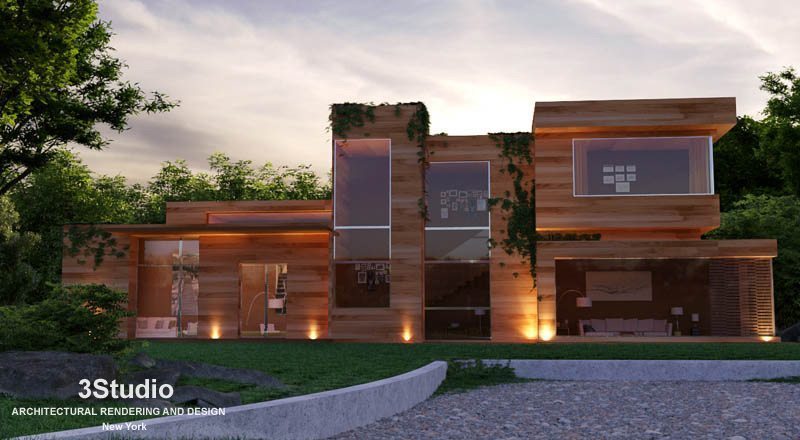New York, NY
e-mail: mail@vrender.com
web: https://vrender.com
© Copyright Vrender.com 2016.
The tools for virtual and augmented reality developed for architecture, design, and construction (ADC) areas are constantly being improved and optimized, while their cost is gradually decreasing. Virtual and augmented reality becomes more accessible to architects, engineers, and contractors. With the help of these tools, one can implement any projects.
The VR and AR are gradually becoming the environment of communication, creation, and testing of projects in the fields of ADC. VR and AR tools based on developments and experience from other industries become the industry standard for ADC. One can perform a fast iteration with their help, to improve projects in close cooperation with customers and colleagues.
VR allows creating fully managed digital environments, while AR puts virtual elements on top of an existing real picture. Thus, the same technology is used for different purposes: Virtual Reality is more suitable for architects, whereas AR is more often used during the construction.
Although both innovations are rapidly gaining popularity, they are still at an early stage of development. Vrender had studied the solutions presented on the market in more detail and compiled a list of VR/AR tools that are optimal for those who work in the fields of design and construction.
ARki
ARki is an application for visualization of architectural models. It integrates AR technology into the existing architecture, allowing creating three-dimensional models with multiple levels of interactivity for both design and presentation.
ARki can be used on any iOS/Android device. The application simply imposes 3D models on existing two-dimensional floor plans. ARki also includes several additional interactive functions, for instance, the real-time analysis and material selection. Using this application, one can record user-selected models in the three-dimensional format, as well as share own content via e-mail or social networks.
Storyboard VR
Storyboard VR is a free prototyping and visualization tool developed for architects and other ADC professionals. Using this program, users can organize, scale, and animate simple two-dimensional models. Storyboard VR creators, the company named Artefact, have developed it for their own internal use to work on VR projects. They’ve created their own tool to quickly and easily create a prototype of VR.
The application allows creating and loading drawings and environmental maps from existing drawing tools into Storyboard VR, then choosing own assets and building own storyboard. The simplicity of use allows designers exchanging ideas and receiving feedback at the initial stage of the design process. Storyboard VR also has slides making it something like the VR-version of PowerPoint.
Pair
Pair (formerly known as Visidraft) uses licensed software and augmented reality technologies to create applications that allow architects “dragging” 3D models of consumer furniture and pieces of technology into their projects using an iPhone or iPad. The online catalog of models and assets now includes more than 200 products for home and office by Fortune 500 manufacturers. The catalog is supplemented with new products every day.
After the launch of the application, the company had drawn its attention to the fact that the main growth was in furniture and equipment manufacturers segment. The main difference between Pair and other AR solutions is that the focus is made on its products and consumers, which allows users to physically navigate inside a virtual 3D product like in their home or office.
SmartReality
SmartReality is a mobile application of augmented reality, which allows the camera to overlay an interactive BIM model on printed design layouts, thereby creating a three-dimensional visualization of projects. Users can scale, change structural layers, navigate through the project stages, and record their images and video. Also one can create a free account for downloading 2D plans and get the corresponding 3D plan and models using the application.
The SmartReality application is also available in the VR version developed by the R & D JBKnowledge Labs team. This version allows users to walk through the model of a
building using virtual reality solutions such as Oculus Rift, Samsung Gear, and Project Tango by Google.
Fuzor
Fuzor is an application for real-time rendering, which integrates with Revit. The program is based on the technology originally developed by Kalloc Studios for creating games. Thanks to bidirectional direct communication with Revit, users can navigate, visualize, comment, and verify BIM information, as well as synchronize changes between the two named tools.
The direct communication allows Fuzor to instantly update and reflect the changes made in the Revit file. It supports various measurements, lighting analysis, color and visibility filters, cross-section, slice cutting, and video rendering with BIM support.
In order to have a possibility of joint work with construction sites, BIM Solution supports the visualization of BIM drawings for mobile devices using Google Drive and Dropbox. At the moment, Fuzor supports files of Revit, Archicad, Rhinoceros 3D, Navisworks, SketchUp, FBX, and 3DS.
Vrender Company 2018
A person receives up to 90% of the information through vision. A qualitatively visualized data case will help form in your buyer an emotionally positive and more complete opinion on the property. One of the tools by which this can be achieved is interactive visualization. Using the technology of interactive visualization allows one to become familiar with the project by choosing the locations and angles for viewing on their own.
Interactive visualization is an application developed based on the game engine. Running it, one can get information on several scenarios: go for the first-person walk on the object or use an interactive visualization, when the object is demonstrated from distance or from a bird’s eye view. For instance, an application allows inspecting the development area and its adjacent territories, to familiarize oneself with all the facilities of the complex, to look into all interesting apartments and even admire oneself with the views from their windows. This type of visualization can be seen on both large monitors and multi-touch tables in sales departments, as well as in online applications.
Another way to comprehensively familiarize oneself with the object is the 3D tour.This is a visually simulated trip on a property and its surroundings. It is technically implemented by compiling spherical panoramic images, forming a three-dimensional picture of reality.
3D model for the tour can be developed based on real photographs of the residential complex and its environment, ready-made apartments, showroom data or using digital graphics for the visualization. The qualitatively developed digital product can simulate reality quite realistically. The technology is actively used by domestic developers, as many sites of building complexes offer potential customers to use widgets with an option of a 3D tour. Though, not always one will have enough angles for viewing in this case but such a walk can compile the overall impression from the walk.
A virtual reality also allows to remotely demonstrating the offer to a potential customer in details. The buyer can thoroughly examine the property without visiting the construction site personally. In addition, if we are talking about objects under construction, there might be nothing to watch yet, as the house can be on the stage of a ditch.
The full effect of presence is provided by using a special VR headset – glasses and helmets of virtual reality. The market has a lot of developments of such products, from relatively inexpensive made by Google Cardboard, to more technological and expensive solutions such as Locus Rift or HTC Vive. A digital model of apartments is created based on a special platform. One can see everything from inside in a virtual reality. Technology allows to clearly evaluate, for instance, the size of the apartment, its layout, interiors, views from the windows. If you want, you can change the design, arrangement of furniture, to rearrange the room in another way, etc. VR is a promising direction, but not massively used yet.
Augmented reality puts digital information over an existing picture. For example, in an unfinished apartment, pointing a smartphone with the installed program on the walls, you can see what the room will look like after repairing and become acquainted with possible interior solutions. Any information can be displayed on the wall of a building, like one helping sell an apartment or any other useful one – and the buyer can become acquainted with it looking on a screen of own mobile device. The seller gets the opportunity to track the interest of customers to the object giving augmented reality, to find out when the buyer studies information about it and to react fast on client demands.
Vrender Company 2018
Architectural 3d Interior Rendering and 3D Interior Visualization go hand in hand. With this new technology the architects are able to give their work a new dimension. They have now become capable of having a visual of their finished work by drawing up a model of their designs with the help of software that enables them to take a look at the tentative appearance of the finished product. The architects work much with software and programs to make a detailed design of the interior of the buildings and to get a view of the project that they have taken up. This technology is cost effective and simple which shows minute details and flaws.

This Architectural 3d Interior Rendering helps them to get a good idea about how to go about the planning and processing of the interior designs of the buildings. This enables the designer and the architects to draw up a 3D interior plan that they can put to paper and finally get to work on the project site. This process also helps them to look into the probable flaws that the plan may have, thus giving them the scope to correct the same.

3D Interior Rendering is also important to let the interior designers and architects get a better view as to what their final design will look like. The whole purpose of this 3D Interior Rendering is to create a 3D Interior based on the designers and architects ideas. The designers can take a closer look at the designs that are created by him or her. This technology helps both the architects, interior designers as well as those with the construction business to create a 3D model of the interior and the exterior models of the buildings which can be both commercial and residential.In its true sense the word rendering has many meanings.
There are different types of rendering like cement rendering, brick rendering, acrylic rendering and solid plaster. But now a day the word rendering is also used with connection to the new and improved technology of the 3D rendering of homes and building interiors and exteriors. House Rendering Australia has now become an art that just more than a job.
A good and professional rendering person has the ability to change the look and pattern of the house or building by playing with different colors, patterns and textures to give the house a new look and dimension. This is a cheap and effective way to detect and correct flaws in advance.
Visualization using 3D technologies is a creative process. The result of this work is a unique image that conveys the mood of the author and leaves some impression on the viewers.
Architectural 3D visualization of exteriors is created almost every time before the beginning of the project. It largely facilitates the perception of the building, provides an opportunity to consider in details all the pros and cons, to evaluate all the architectural delights and surroundings terrain. Instead of tedious and boring drawings, accurate calculations, graphs and tables, the viewer sees an accurate 3D model of the object that is easily percepted.
However, in order to create this model, it is necessary to pass certain working stages. Let’s try to understand what the steps precede this ultimate goal – the creation of a 3D model of the exterior and let’s understand, whether it is easy or not.
So, first of all, each project requires an individual approach. In the preparation stage, analysis and planning are necessary. By breaking down a whole into simple components, it is much easier to perform the project to meet the set deadlines and a certain budget.
Today 3d Studio Max software is especially popular, which offers users wide opportunities and plenty of options for high-quality and high-grade graphics. This professional software package is ideal for creating high-quality animation and three-dimensional modeling, in particular, 3D visualization of houses, buildings, facades etc. The program offers plenty of options, giving the maximum capacity.
Another program for architectural visualization and design is ArchiCAD. It is simple in usability and functionality. You can use it to implement a variety of technologies. A unique feature of this program is that it can prepare required documentation, while the architect is developing a 3D visualization of the exterior.
In addition to programs, actively used various modules and plug-ins for 3D visualization of premises, houses, buildings, facades and exteriors in general:
V-Ray is a rendering system and is used to create lightweight versions of objects.
By using such programs, a three-dimensional scene is created, after which you can proceed to architectural visualization itself. Time frames of exterior’s rendering process can range from a few hours per frame to several weeks, depending on the project, experience and software used. Another important point is the power of computer. More powerful it is – the quicker and better the process is.
So each project requires an individual approach. In the preparation step, it is necessary to analyze and plan. By breaking it down into simple components, it is much easier to carry out the project, to meet the set deadlines and to fit into a certain budget.
Main stages:
1. Development of technical specification. At this stage occurs the preparation of all necessary drawings, charts and other documents, which are full of numbers and calculations. The main task is to make accurate calculations of architecture that can be implemented in the project.
2. The calculation of cost of the future project is prepared. Here are made rough estimates for construction materials and labor. This step is necessary in order to understand if to apply 3D imaging of exterior or not.
3. Creation of a basic model of the future facility. Selection of a program to work, all the calculations are converted to graphics, initial sketches are made.
4. Creation of exterior of the desired object. The future object is fully created that you can see in 3D.
5. Addition of the finishing touches. Engagement in the development of interactive features, enhancement of image quality, addition of convenience features and options.
Thus, we can say that the process of creation of 3D-models of exterior’s visualization is quite complicated and requires specific efforts, experience and professionalism.
The final stage of visualization and buildings’ 3D exterior design can become its completion in Photoshop using various additional plug-ins, to give it a more realistic and lively outlook.
Author: Maxim S
New York, NY
e-mail: mail@vrender.com
web: https://vrender.com
© Copyright Vrender.com 2016.
3D rendering has become an essential tool in the real estate industry, particularly for realtors. It provides a powerful way to visualize properties for marketing and sales purposes, enabling potential buyers to get a realistic view of a property before it’s even built or without having to visit in person. Here’s an overview of how 3D rendering is used in a realtor’s work:
1. Pre-construction Visualizations: For properties that are not yet constructed, 3D renderings allow realtors to show prospective buyers what the finished building will look like. This visualization can include exterior views, landscaping, and surrounding areas.
2. Interior Renderings: Realtors can use 3D renderings to display the potential layout and design of interior spaces. This can be especially helpful for clients interested in customization options for new construction or for suggesting how space might be used or modified.
3. Virtual Staging: Rather than physically staging a home with furniture, realtors can use 3D renderings to virtually furnish an empty space. This can help buyers better understand the scale and potential of a room or area.
4. Virtual Tours: 3D renderings can be crafted into a virtual tour that allows clients to “walk through” a property from their computer or mobile device. This interactive experience can be incredibly effective for engaging with distant or busy buyers.
5. Marketing Materials: High-quality 3D renderings can be used in brochures, website listings, and social media posts. They tend to be more appealing and attention-getting than traditional 2D-floor plans or blueprints.
6. Enhancing Client Understanding: 3D renderings can help bridge the gap between technical architectural drawings and the layperson’s understanding. They allow realtors to explain complex design features and selling points more easily.
7. Project Modifications: By visualizing a property in 3D, developers and clients can identify and make modifications before construction begins, saving time and money.
8. Planning and Approvals: When seeking planning permissions or community support for a new development, having a 3D rendering can help stakeholders envision the project and its impact on the area.
Technologically, 3D renderings are created using advanced computer graphics software by skilled professionals. These can range from dedicated architectural visualization firms to in-house designers at larger real estate companies. The process involves modeling the structure, applying textures, setting up realistic lighting, and often integrating the building into an actual photograph or a realistically created environment.
For clients, 3D renderings provide a tangible representation of a property that can inspire confidence and help in making an informed decision. For realtors, these renderings are a quintessential part of contemporary marketing strategies, enhancing the presentation and sale of both residential and commercial properties.
The main rule of a successful realtor is always to be in trend! Rendering is a real trend for the next years in dealing with real estate.

According to the National Association of Estate Agents of USA for 2014, rendering allows to sell at 27% more expensive and 20% quicker.
Rendering or visualization is an innovative product of Internet technologies development, photos, and video replay. Little to no tampering helps to convey an object’s image to a customer (occupier) of real property.
This trend helps to modify the concept of a realtor’s profession changing the attention of a nonprofessional from a lawful angle to advertising. Even 2 or 3 years ago answering the question “What does realtor do”, many people pictured themselves to be «rather lawyers» than realtors. But today they have become more like «marketing experts, advertisers, decorators or negotiators» than a realtor.
There appeared vociferous opponents to rendering from an «old school» of realtors, which consider that rendering will kill the profession of estate agent and lead to dumping at the market of realtor’s services. We can dispute or accept it. Notwithstanding the above and whose side we will choose the progress is unstoppable, so as rendering. If truth be told, it isn’t depending on us. The train called «a render» has a great speed, so you can jump into it or stay aside. This is your own choice.
The main stages of rendering
Pre-sale preparation of an object. This is of paramount importance to take out the rubbish before shooting a real property. Take away all unnecessary things and the less the real estate is cluttered the easier it will be sold out.
The main instruments of rendering are photos, video, 3D planning, and 3D virtual tour.
Rendering layout on the Internet and on destination sites. We can arrange an object on a corporate site, on other effective sites, and arrange it with only one click.
Rendering in the printing industry: posting full-colored advertisements with QR codes, presentations, and other inexpensive install printing.
The selling of real property will be seen by tens of thousands of potential clients (suppliers).
Basically, 3D visualization represents the main one of the most important parts within 3D graphics. The program that delivers rendering is called render.Within the rendering structure we make use of the algorithms to get a qualitative picture. In general, rendering can change vector structure into flat -pixels. As the result, a THREE DIMENSIONAL image can be displayed aesthetically as a two dimensional picture on the PC monitor.
The main one of the most outstanding renders is usually 3ds Max. 3ds Greatest extent is universal software since it is used for 3D modeling, generally. Also, the program is great for video games design.
You can be sure that THREE DIMENSIONAL visualization is good for interior design. Usually, it helps you to see the genuine picture of the future interior. Internal visualization lets you to view every element of a house a set furniture. 3D creation creates the presence impact. Moreover, renders have been successful in 3D models version and that’s why its creations are viewed as to be masterpiece.
Preview creation is a famous and useful option, too. It is primarily used when a customer hesitates and not sure about a few elements of the future house. For instance , it can be a color of wall or even wallpaper, or some materials’ selection.
Final 3D creation is the last variant associated with interior based on all amended corrections on the stage associated with preview visualization.
According to the project’s goal we have rendering in the real time mode (used within creating videos) and pre-rendering which is more convenient for personal computer games’ creation. Pre-rendering utilizes 3D accelerators. The last types help you to increase the old computer’s graphics quality.
